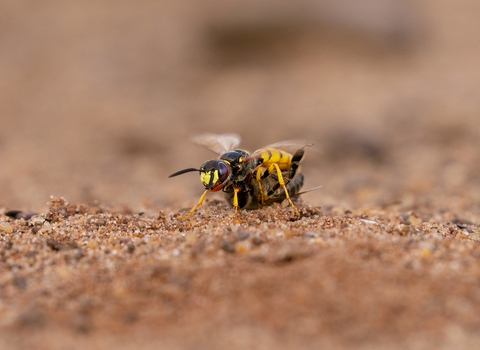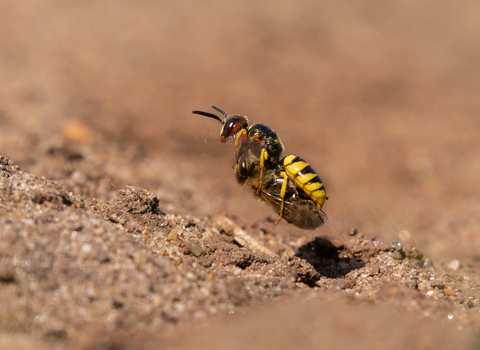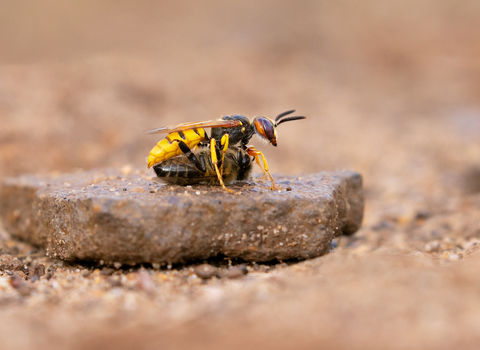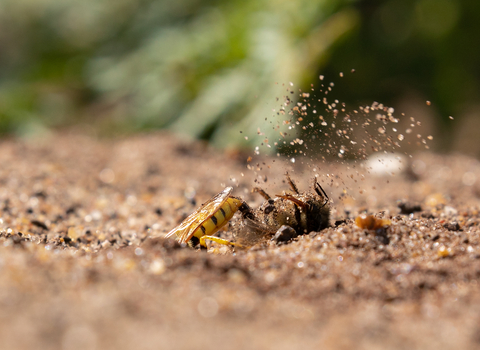
Bee wolf ©Jon Hawkins - Surrey Hills Photography

Bee wolf carrying honeybee ©Jon Hawkins - Surrey Hills Photography

Bee wolf ©Jon Hawkins - Surrey Hills Photography

Bee wolf excavating her burrow ©Jon Hawkins - Surrey Hills Photography
Bee wolf
One of our largest and most impressive solitary wasps, the bee wolf digs a nest in sandy spots and hunts honey bees.
Scientific name
Philanthus triangulumWhen to see
July to SeptemberSpecies information
About
The bee wolf (sometimes beewolf or bee-wolf) is a large solitary wasp, most often found on sandy areas of lowland heath and coastal dunes. They used to be extremely rare, with just a few scattered populations in southern England, but in the last few decades they have expanded their range dramatically.Male bee wolves gather together in a form of lek, where each male defends a small territory and uses pheromones to attract a female. After this, males play no further part in the nesting process.
Female bee wolves have to work a lot harder, digging a nesting burrow in a sandy bank or floor. These burrows can be a metre long, with up to 34 side burrows that end in brood chambers. Once excavation has begun on the burrow, the female goes hunting.
Female bee wolves prey on honey bee workers, paralysing them with a sting and carrying them back to their burrow. Up to six paralysed honey bees are placed in each brood chamber, then a single egg is laid on one of the bees and the chamber is sealed with sand. After hatching, the larva feeds on the cache of honey bees before spinning a cocoon to hibernate through winter, ready to emerge in spring.
